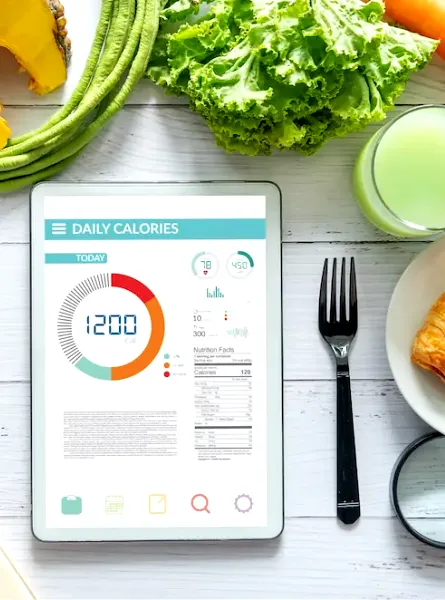
Intermittent fasting has become a popular practice today as a tool for weight loss and improving metabolic health. In recent years, it has gained visibility on social media, where many people share their experiences and results. But with so many possible methods, it can be hard to know where to start.
This article presents five types of intermittent fasting, their benefits, limitations, and answers to the most common questions. A great starting point for choosing the approach that works for you.
What Is Intermittent Fasting?
Intermittent fasting involves alternating between periods of eating and periods of abstaining from calorie intake. Unlike certain diets, it doesn’t prescribe what to eat, but rather when to eat. Depending on the method chosen, fasting can last from a few hours to an entire day.
Is Intermittent Fasting Right for Me?
Intermittent fasting is not a one-size-fits-all solution. Before getting started, it’s important to consider:
- Who should avoid it: pregnant or breastfeeding women, children, teens, people with eating disorders, or anyone taking certain medications (e.g., for diabetes).
- Warning signs it may not suit you: persistent fatigue, irritability, difficulty concentrating, binge eating, or sleep problems.
If you recognize yourself in these situations, it’s best to adjust your approach or consult a registered dietitian to determine whether this method is safe for you.
5 Types of Intermittent Fasting
1. 16:8 Fasting: 16 Hours Fasting, 8 Hours Eating
This is the most common type of intermittent fasting. It involves fasting for 16 hours—often between dinner and a late breakfast the next day—then eating normally within an 8-hour window (for example, from noon to 8 p.m.). It fits well with a regular work schedule.
Benefits:
- Easy to incorporate into daily routines.
- May help stabilize blood sugar and prevent large energy swings.
- Flexible: the eating window can be earlier (9 a.m.–5 p.m.) or later (12 p.m.–8 p.m.).
Drawbacks:
- Can be hard for those who like to eat breakfast early.
- May cause slight muscle loss if protein intake is insufficient.
- Some people experience fatigue or irritability at first.
Many people wonder if skipping breakfast is required… The answer is no: you can just as easily skip dinner, as long as the fasting period totals 16 hours.
2. 5:2 Fasting: Eat Normally 5 Days, Restrict 2 Days
This method involves eating normally for five days and reducing calorie intake for two non-consecutive days per week. It’s suitable for those who don’t want to fast every day.
Benefits:
- Easy to fit into a regular workweek.
- May promote weight loss without drastic daily changes.
- Encourages better meal planning.
Drawbacks:
- Requires more meal organization on fasting days.
- May cause hunger, fatigue, or irritability on fasting days.
- Less suitable for people with high energy needs or irregular schedules.
Note: Avoid fasting on two consecutive days. Ideally, space them out to allow recovery. Choose high-fibre and protein-rich foods on fasting days to stay satisfied.
3. 24-Hour Fast: One Full Day Without Eating
This type involves fasting for 24 hours, usually once or twice a week—for example, eating dinner on Monday and not eating again until Tuesday evening.
Benefits:
- Can significantly reduce calorie intake.
- May promote autophagy, the body’s natural cellular repair process.
- Simple to understand: one full fasting day.
Drawbacks:
- Requires strong fasting tolerance.
- Can cause low energy or headaches.
- May interfere with social or work commitments.
Important: Consult a dietitian if you have health conditions or take medication.
4. Alternate-Day Fasting
This method alternates normal eating days with fasting days (complete or low-calorie). It’s demanding but can be effective for some people.
Benefits:
- May support weight loss.
- May improve cardiometabolic markers.
- Structured—appealing for disciplined individuals.
Drawbacks:
- Hard to maintain long term.
- May affect energy, mood, or sleep.
- Requires motivation and careful planning.
Good to know: Some versions allow a small calorie intake on fasting days. Listen to your body and adjust the frequency as needed.
5. Spontaneous or Intuitive Fasting: Skip a Meal When You’re Not Hungry
The most flexible approach—simply skipping a meal when you’re not hungry, without strict schedules.
Benefits:
- Encourages mindful eating and body awareness.
- No fixed timing—very flexible.
- Less pressure or guilt.
Drawbacks:
- May lead to overeating later.
- Less structured—harder to track results.
- Requires strong self-awareness.
Tip: Keep healthy snacks ready to go. This method works well for people who want to reconnect with their hunger cues—without pressure.
Frequently Asked Questions About Intermittent Fasting
1. Which Type of Intermittent Fasting Is Most Effective?
There isn’t a single “most effective” fasting method for everyone or every health goal. The 16:8 format (16 hours fasting, 8 hours eating) is, however, one of the most studied and easiest to maintain.
- Simplicity and flexibility: the eating window can be early or late depending on your habits (e.g., 12–8 p.m. or 9 a.m.–5 p.m.).
- High adherence: many find it sustainable when it fits into social and family life.
- Muscle preservation: minor muscle loss can occur but is preventable with enough protein and strength training.
- Metabolic effects: research suggests earlier eating windows may better support blood sugar regulation.
In short, the 16:8 approach is popular and evidence-based, but the “best” fasting method depends on your goals (weight loss, muscle maintenance, metabolic health) and lifestyle.
2. What Foods Are Not Allowed During Intermittent Fasting?
During fasting periods, the goal is to avoid calorie intake to maintain the fasting state.
- Avoid: solid foods and calorie-containing drinks such as juice, milk, alcohol, smoothies, sweetened or protein drinks. Anything above 5–10 calories generally breaks the fast.
- Allowed: water, black coffee (no sugar or milk), unsweetened tea, and calorie-free sparkling water.
Simple rule: if a beverage or product contains calories, save it for your eating window.
3. Can You Drink Water While Fasting?
Yes! Water, tea, and black coffee are allowed—and essential to stay hydrated.
4. Does Intermittent Fasting Cause Muscle Loss?
Intermittent fasting can cause some lean muscle loss if your nutrition isn’t balanced. The good news: with adequate protein intake and resistance training, muscle mass can be maintained—or even increased—while reducing body fat.
To minimize muscle loss, it’s essential to:
- eat protein-rich, balanced meals during your eating window;
- include strength or resistance training in your routine;
- avoid overly restrictive diets that affect energy and recovery.
For a personalized plan, consulting a registered dietitian is an excellent way to preserve muscle mass while enjoying the benefits of intermittent fasting.
5. Can You Work Out While Fasting?
Yes, depending on your tolerance. Some people feel fine exercising while fasting; others may lack energy. For high-intensity workouts, eating before or after may be better depending on your needs. Learn more in our full article: All About Fasted Training.
6. Is Intermittent Fasting Safe for Everyone?
No. It’s not recommended for pregnant or breastfeeding women, children, teens, individuals with eating disorders, or those taking certain medications (especially for diabetes). In such cases, medical supervision is essential.
Working with a Dietitian: A Real Advantage
If you’re curious about intermittent fasting but unsure where to begin, book an appointment with a registered dietitian to explore the method best suited to your lifestyle, goals, and health needs. This health professional can help you:
- choose the fasting type that fits your daily routine;
- plan balanced meals that promote satiety and prevent deficiencies;
- adjust your approach based on energy levels, physical activity, and personal constraints;
- build and maintain healthy eating habits that support long-term wellness;
- identify if intermittent fasting isn’t safe for your specific condition or medications.
With personalized guidance, you’ll be better equipped to enjoy the benefits of intermittent fasting—without compromising your health.





